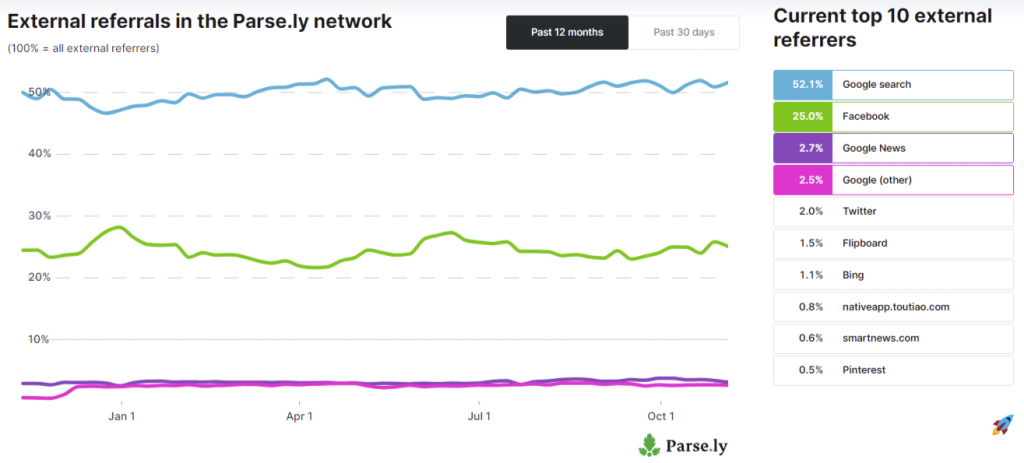Hey there – keywords? Are you out there?

Yes, keywords are definitely out there. They’re just unlikely to show up at your desk for free without some effort on your end.
With keyword opportunities so plentiful, you’ll need to be well-versed in the best ways to pinpoint them and use them in your brand’s favor.
Don’t worry – you got this. Here’s all you need to know about embarking on an incredible keyword discovery:
What is keyword discovery?
Despite there already being hundreds of thousands of words in the English language, we still find ways to add plenty of new words to the dictionary each year. Of that seemingly endless pool of words, which ones are most suited to your brand? More than that, which combinations of them make up the phrases that your ideal customers are searching?
Determining the right keywords can be slightly daunting once you get past the obvious ones. We call the process keyword discovery, and the best research journeys can lead you to the relevant keywords that people search for when they’re in need of the information, products or services that your brand can provide.
With that said, the goal is not simply getting people to visit your website, but more so to attract the right kind of eyes and ears with perfectly targeted keywords.

Why should keyword discovery be on every marketer’s to-do list?
Confession time: We’re all still seriously hooked on Google. The search engine giant is the first place any of us go when we need an answer. That’s why Google search is the source of just about half of internal referral traffic.

When we type in a search query, we expect to find our answer on the first page of results. How does your brand earn such high standing? Keywords, of course.
Keyword discovery helps you identify the words or phrases that you can effectively sprinkle into your blogs, landing pages and other digital content. With any luck, your site will rank high enough for viewers to choose you before they get to your competitors.
The power of long-tail keywords
Some keywords feel like no-brainers for brands. For instance, a bagel shop will certainly want to use the word “bagel” in its online marketing efforts. However, despite being a popular search term, “bagel” has way too high of a search volume for the average mom-and-pop bagel shop to have any chance of competing for a page 1 ranking position. It’s the more specific phrases with fewer daily search counts that can be easier to rank for – such as “gluten-free bagels near me” or “local bagel shops.”
Head terms – like “bagel” – have high search volumes, high ranking competition, low converting traffic and multiple search intents. By contrast, long-tail keywords are low in search volume and ranking competition, and have a more precise search intent.
As such, this long-tail approach to search often has a much higher conversion rate. That’s because people searching for “bagel” can be in a thousand-and-one different mindsets, while someone typing in “gluten-free bagels near me” is likely ready to buy that specific item.
Long story short: Don’t forget the power of long-tail keywords when brainstorming new ideas.
How do you find your targets?
Ready to come up with those ever-important keyword ideas? Here are some ways to find new search terms to target:
1. Think like your customers
Take your professional hat off for a minute and try to escape your marketing bias. Before getting lost in spreadsheets, keyword tools and data, put yourself in the shoes of your consumers.
Your customers will likely use very different verbiage than you. While you may say “Industrial ethernet cable”, your customers might be saying “Big machine cable thing”, or “Manufacturing plant cable is broken.”
Think about their needs and perspectives, and consider what you would type into Google if you had the same queries. This will help you build an empathetic view of your consumers and develop a big-picture understanding before diving into the details.
2. Build an initial list of keywords
Your moments in the customer’s seat may bring to light some initial keyword ideas. Go ahead and jot them down. As you reassume your marketer’s hat, you can add to this list by considering what you already know about your brand, products, services and typical consumers.
Side note: At this point, you may want to move from pen and paper to spreadsheet, as you’ll be analyzing these keywords during later keyword research stages.
You can begin to organize these initial ideas by different categories and topics that are relevant to your company. It’s okay to start broad at this stage. For instance, that bagel shop we mentioned earlier may start with a list of their offerings in addition to bagels, such as pastries or catering.
Once you have these categories in place, you can use them to come up with specific keywords that fall into the buckets. Try to fill each bucket with a healthy mix of head terms and long-tail keywords.
3. Gather the current numbers
If you already have a website, blog and other digital content, you can pull keyword data to see what’s already performing. Create a list of keywords that are currently driving traffic to your site and see if they inspire new ones. Plus, you can find additional keywords that your blogs are ranking for that you may not have initially intended, and use those terms to write and publish new content. Additionally, you can refresh old content with these new terms for a chance at earning higher SERPs.
4. Check out your competitors
Your online presence is, of course, working against some competition. It’s important to see what your competitors are up to in the keyword side of things to help evaluate your own list of terms.
For starters, if your competitors are ranking for keywords that are already on your list, you’ll want to work on improving your use of those terms to outrank them. Remember that just because your competitors don’t seem to care about certain keywords, it doesn’t mean you should also turn away from those terms. This can offer a priceless opportunity for your brand to capitalize on keywords that have far less competition. In the same vein, keywords that are important to other brands don’t have to be vital for yours.
5. Use data from keyword tools
Let the data guide you as you work to expand and refine your list of keywords. Online keyword research tools can offer keyword suggestions and help you find new terms, phrases, categories and topics backed by the most current trends and search volumes.
Some of the best helping hands out there include:

The work doesn’t stop there
You now have a whole new list of keywords to work with – and you’re entitled to a celebratory dance.
Just keep in mind that keyword discovery will creep back up on your to-do list in the near future. While some keywords will be veterans on your list who stick around for the long run, it’s important to keep growing your list of keywords on a regular, ongoing basis.
The more you refresh your keywords, the better your search presence and traffic results will be. Plus, new keywords bring fresh content ideas so you can keep churning out the content that brings the right viewers to your site.
Now all that’s left to do is wish you the best of luck as you embark on your keyword discovery!





